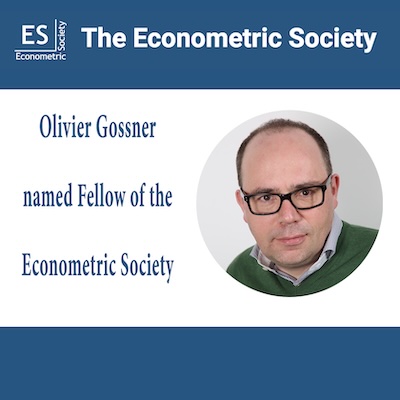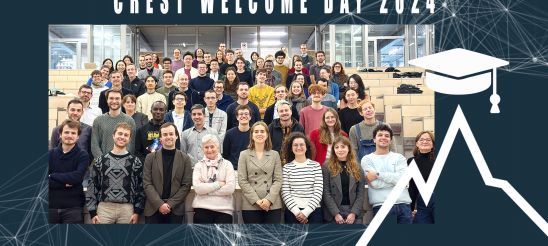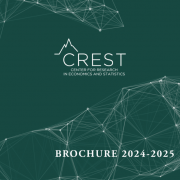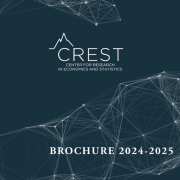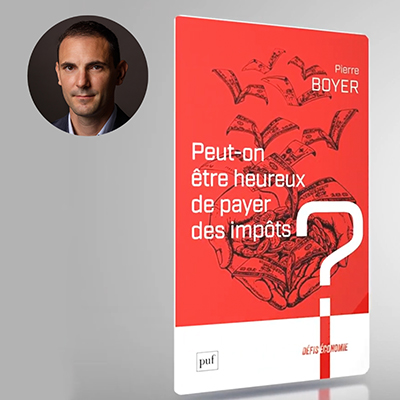“Démographie : le péril vieux”
Pauline Rossi était l’invitée de l’émission Les matins de France Culture.
Mardi 22 octobre 2024
Pauline Rossi, invitée de l’émission “Les matins de France Culture” sur la démographie
“Démographie : le péril vieux”
Pauline Rossi était l’invitée de l’émission Les matins de France Culture.
Mardi 22 octobre 2024
Olivier Gossner Named Fellow of the Econometric Society
Olivier Gossner: A Leading Specialist in Game Theory

Olivier Gossner is a prominent scholar at the intersection of economics and mathematics, renowned for his expertise in game theory. His research focuses on repeated games, the strategic use of information, and bounded rationality, exploring how individuals and institutions make decisions under uncertainty.
In his recent work, Gossner has introduced innovative models of strategic reasoning and proposed a significant reform to the Solvency II regulation, advocating for a reallocation of insurance capital towards the productive economy. His contributions aim to reshape how financial systems can better support economic growth.
Gossner holds multiple prestigious titles, including Fellow of the Game Theory Society, where he also serves as the Vice President for Communications, and now, Fellow of the Econometric Society. In recognition of his groundbreaking research, he was awarded an ERC advanced grant from the European Commission for his SInfoNiA project, which further advanced strategic information theory in economics.
Overview of The Econometric Society
Founded in 1930, the Econometric Society is one of the most prestigious academic societies in the world, bringing together leading economists and statisticians. Its mission is to advance economic theory in its relation to statistics and mathematics. The Society is known for its rigorous standards, and membership includes many of the most influential thinkers in economics over the past century.
The Econometric Society organizes major conferences around the world and publishes three of the field’s top journals: Econometrica, Quantitative Economics, and Theoretical Economics. Its influence extends across academic circles and into the policy-making world, where insights from its members shape major economic decisions globally.
What It Means to Be a Fellow of the Econometric Society
Becoming a Fellow of the Econometric Society is one of the highest honors in the field of economics. Each year, the Society recognizes a select group of economists whose research has made a profound impact on the field. The nomination process is highly competitive, and Fellows are selected based on their body of work, their contributions to advancing economic knowledge, and their influence on the academic community.
For Olivier Gossner, this fellowship represents a crowning achievement in a career already full of significant milestones. It places him in a distinguished group of scholars who have shaped modern economic theory and practice, and it recognizes his contributions to game theory and decision-making processes.
CREST and The Econometric Society
CREST (Center for Research in Economics and Statistics) maintains a significant relationship with the Econometric Society, with its researchers contributing to some of the field’s most prestigious journals. CREST researchers have published 8 papers in Econometrica, including key works like “Consistent Pseudo-Maximum Likelihood Estimator and Group Transformation” by G. Gourieroux, A. Monfort, and J.M. Zakoian, as well as Yves Le Yaouanq’s research, “Dual-self Representations of Ambiguity Preferences.”
In Quantitative Economics, CREST has published 5 papers, with notable studies such as “The Provision of Wage Incentives: A Structural Estimation Using Contracts Variation” by D’Haultfoeuille and Février, and “Inequality and Earnings Dynamics in France: National Policies and Local Consequences” by F. Kramarz, E. Nimier-David, and T. Delemotte.
The lab’s contributions extend to Theoretical Economics as well, with Olivier Loisel’s work on “The Implementation of Stabilization Policy” and Kikuchi and Koriyama’s research on “The Winner-Take-All Dilemma.”
CREST’s consistent publications in these prestigious journals reflect its prominent role in advancing economic research and theory on a global scale.
Olivier Gossner Named Fellow of the Econometric Society
Olivier Gossner: A Leading Specialist in Game Theory

Olivier Gossner is a prominent scholar at the intersection of economics and mathematics, renowned for his expertise in game theory. His research focuses on repeated games, the strategic use of information, and bounded rationality, exploring how individuals and institutions make decisions under uncertainty.
In his recent work, Gossner has introduced innovative models of strategic reasoning and proposed a significant reform to the Solvency II regulation, advocating for a reallocation of insurance capital towards the productive economy. His contributions aim to reshape how financial systems can better support economic growth.
Gossner holds multiple prestigious titles, including Fellow of the Game Theory Society, where he also serves as the Vice President for Communications, and now, Fellow of the Econometric Society. In recognition of his groundbreaking research, he was awarded an ERC advanced grant from the European Commission for his SInfoNiA project, which further advanced strategic information theory in economics.
Overview of The Econometric Society
Founded in 1930, the Econometric Society is one of the most prestigious academic societies in the world, bringing together leading economists and statisticians. Its mission is to advance economic theory in its relation to statistics and mathematics. The Society is known for its rigorous standards, and membership includes many of the most influential thinkers in economics over the past century.
The Econometric Society organizes major conferences around the world and publishes three of the field’s top journals: Econometrica, Quantitative Economics, and Theoretical Economics. Its influence extends across academic circles and into the policy-making world, where insights from its members shape major economic decisions globally.
What It Means to Be a Fellow of the Econometric Society
Becoming a Fellow of the Econometric Society is one of the highest honors in the field of economics. Each year, the Society recognizes a select group of economists whose research has made a profound impact on the field. The nomination process is highly competitive, and Fellows are selected based on their body of work, their contributions to advancing economic knowledge, and their influence on the academic community.
For Olivier Gossner, this fellowship represents a crowning achievement in a career already full of significant milestones. It places him in a distinguished group of scholars who have shaped modern economic theory and practice, and it recognizes his contributions to game theory and decision-making processes.
CREST and The Econometric Society
CREST (Center for Research in Economics and Statistics) maintains a significant relationship with the Econometric Society, with its researchers contributing to some of the field’s most prestigious journals. CREST researchers have published 8 papers in Econometrica, including key works like “Consistent Pseudo-Maximum Likelihood Estimator and Group Transformation” by G. Gourieroux, A. Monfort, and J.M. Zakoian, as well as Yves Le Yaouanq’s research, “Dual-self Representations of Ambiguity Preferences.”
In Quantitative Economics, CREST has published 5 papers, with notable studies such as “The Provision of Wage Incentives: A Structural Estimation Using Contracts Variation” by D’Haultfoeuille and Février, and “Inequality and Earnings Dynamics in France: National Policies and Local Consequences” by F. Kramarz, E. Nimier-David, and T. Delemotte.
The lab’s contributions extend to Theoretical Economics as well, with Olivier Loisel’s work on “The Implementation of Stabilization Policy” and Kikuchi and Koriyama’s research on “The Winner-Take-All Dilemma.”
CREST’s consistent publications in these prestigious journals reflect its prominent role in advancing economic research and theory on a global scale.
Welcome Day at CREST – A Great Start to the New Academic Year
On October 10, 2024, CREST held its annual Welcome Day, an event dedicated to welcoming new members (research assistants, PhD students, postdoctoral fellows, and faculty members), offering them an introduction to the laboratory through presentations from the management team and thematic leaders.
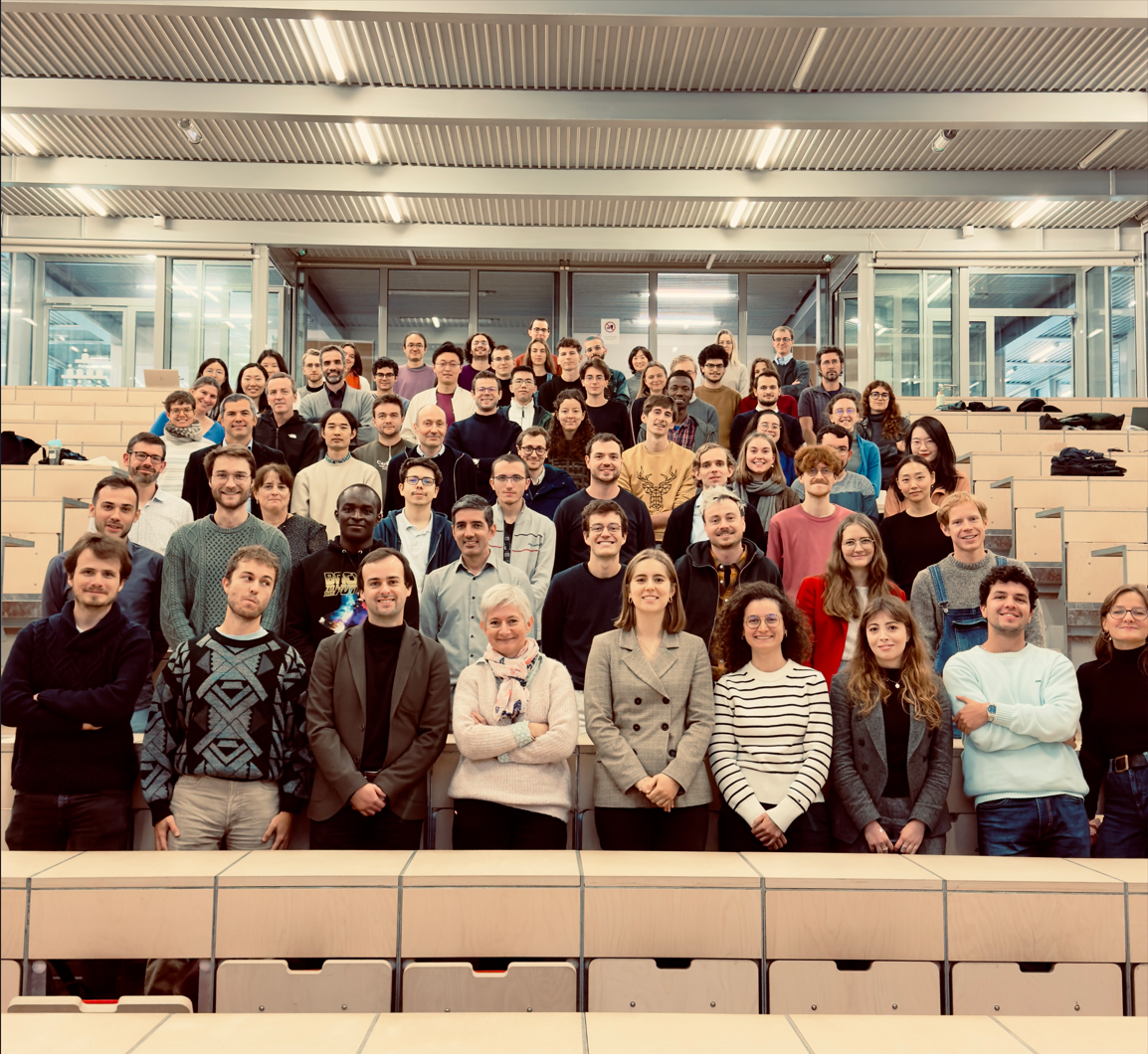
This year, all CREST sites (CREST-ENSAE Paris, CREST-ENSAI, and CREST-Télécom Paris) gathered at the ENSAE Paris campus.
The presentations provided the new members with a comprehensive understanding of CREST’s institutional environment, particularly its affiliations with the Institut Polytechnique de Paris and the University of Rennes. Each newcomer also had the opportunity to introduce themselves and their research project, fostering exchanges with both new and existing members of CREST.
The thematic leaders highlighted well-being initiatives at CREST, as well as the structure of the doctoral program at IP Paris. The event also allowed the administrative team to outline their roles and share useful recommendations.
Our scientific data engineers demonstrated Onyxia, a solution recently deployed in collaboration with GENES.
Finally, CREST PhD students shared information about various reading groups, other lab initiatives, and teaching opportunities available during the doctoral program.
This event also marked the unveiling of CREST’s new institutional brochure for the academic year, which provides an overview of the lab’s research and teaching activities, as well as its prestigious achievements.
Une présentation vidéo de Pierre Boyer pour l’IGPDE
Une présentation vidéo de Pierre Boyer pour l’IGPDE.
09/10/2024
Une présentation vidéo de Pierre Boyer pour l’IGPDE
Une présentation vidéo de Pierre Boyer pour l’IGPDE.
09/10/2024
CEPR_DP19556 Foreign Exchange Interventions and Intermediary Constraints – By Alex Ferreira, Rory Mullen, Giovanni Ricco, Ganesh Viswanath-Natraj and Zijie Wang
CEPR_DP19556 Foreign Exchange Interventions and Intermediary Constraints
By Alex Ferreira, Rory Mullen, Giovanni Ricco, Ganesh Viswanath-Natraj and Zijie Wang
5 Oct 2024
Nicola Viegi, Visiting Professor from Pretoria University at CREST

We are pleased to welcome Professor Nicol Viegi, South African Reserve Bank Chair in Monetary Policy Studies at the University of Pretoria, South Africa, as a visiting professor at CREST with Prof. Giovanni Ricco.
Professor Viegi, along with Giovanni Ricco, has been collaborating for several years on an ongoing project focused on the analysis of monetary policy in emerging markets. Their research leverages state-of-the-art technologies that are traditionally used to study monetary policy in developed economies, particularly in the United States. The first significant outcome of this collaboration, co-authored with Ekaterina Pirozhkova (EM Normandie and SARB), is the paper “Trouble Every Day: Monetary Policy in an Open Emerging Economy” (CEPR Discussion Paper DP19094). In this paper, event study and high-frequency identification techniques are applied to South Africa to explore two primary aspects: first, how monetary policy communication affects the yield curve and other assets, and second, how these effects are transmitted throughout the economy. One of the key goals of Professor Viegi’s visit to CREST is to refine this analysis and co-author a VOXEU article to further explore the broader policy implications of this research.
In addition to this, Professor Viegi is embarking on a new research project that will investigate the macroeconomic effects of central bank balance sheets and their operating frameworks. There is a burgeoning literature, spearheaded by scholars like Ricardo Reis, examining the “new-style central banking,” which entails changes in the size, composition, and remuneration rules of central bank balance sheets, initially developed in response to financial crises. This new operating framework is increasingly being promoted by the IMF as a model for separating financial stability interventions from interest rate policies in emerging markets. South Africa has adopted a similar framework, and Professor Viegi’s research will aim to delve into its effectiveness, macroeconomic impacts, and critical aspects in the context of an emerging market economy. His visit to CREST will allow him to advance this project, developing a theoretical framework to support the analysis.
Finally, Professor Viegi plans to take advantage of his time at CREST to author a policy paper titled “The Past, Present, and Future of Monetary Policy in South Africa.” This reflective piece will summarize the lessons learned from over two decades of inflation targeting in South Africa, while also considering the role monetary policy can play in overcoming the current economic stagnation and supporting the country’s growth and development. The paper will be presented at a national policy conference early next year, where academic and policy experts will gather to discuss the future trajectory of the South African economy.
Nicola Viegi, Visiting Professor from Pretoria University at CREST

We are pleased to welcome Professor Nicol Viegi, South African Reserve Bank Chair in Monetary Policy Studies at the University of Pretoria, South Africa, as a visiting professor at CREST with Prof. Giovanni Ricco.
Professor Viegi, along with Giovanni Ricco, has been collaborating for several years on an ongoing project focused on the analysis of monetary policy in emerging markets. Their research leverages state-of-the-art technologies that are traditionally used to study monetary policy in developed economies, particularly in the United States. The first significant outcome of this collaboration, co-authored with Ekaterina Pirozhkova (EM Normandie and SARB), is the paper “Trouble Every Day: Monetary Policy in an Open Emerging Economy” (CEPR Discussion Paper DP19094). In this paper, event study and high-frequency identification techniques are applied to South Africa to explore two primary aspects: first, how monetary policy communication affects the yield curve and other assets, and second, how these effects are transmitted throughout the economy. One of the key goals of Professor Viegi’s visit to CREST is to refine this analysis and co-author a VOXEU article to further explore the broader policy implications of this research.
In addition to this, Professor Viegi is embarking on a new research project that will investigate the macroeconomic effects of central bank balance sheets and their operating frameworks. There is a burgeoning literature, spearheaded by scholars like Ricardo Reis, examining the “new-style central banking,” which entails changes in the size, composition, and remuneration rules of central bank balance sheets, initially developed in response to financial crises. This new operating framework is increasingly being promoted by the IMF as a model for separating financial stability interventions from interest rate policies in emerging markets. South Africa has adopted a similar framework, and Professor Viegi’s research will aim to delve into its effectiveness, macroeconomic impacts, and critical aspects in the context of an emerging market economy. His visit to CREST will allow him to advance this project, developing a theoretical framework to support the analysis.
Finally, Professor Viegi plans to take advantage of his time at CREST to author a policy paper titled “The Past, Present, and Future of Monetary Policy in South Africa.” This reflective piece will summarize the lessons learned from over two decades of inflation targeting in South Africa, while also considering the role monetary policy can play in overcoming the current economic stagnation and supporting the country’s growth and development. The paper will be presented at a national policy conference early next year, where academic and policy experts will gather to discuss the future trajectory of the South African economy.



